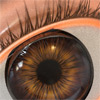Mihai Iliuta wrote:Oh, none of my images are like your last one (with the glass surrounding the liquid). I'm just curious though why in my image with the water slightly inset from the glass produces such a big difference in refraction.
This is for a very simple reason: If a ray leaves a dense medium like glass into air, then it might be bend back into the medium, which is called total internal reflection [1]
This is responsible for a number of optical effects like the ones I've shown here for an old project of mine:
http://www.bsmooth.de/BSolutions/#TIR
So, when you have a small air gap between glass and liquid, then the effect is not neglible at all, but very prominent!
So, why does it work then with Thomas' setup? That's because the NDs are very close to each other, so TIR will happen only on very small spots, and most of these show TIR in nature, too.
The only drawback of the approach of Thomas An. is that it's a bit harder to model, but optically such a setup is the cleanest way to render it - probably this is true for most available renderers.
The approach I use normally is to make the liquid bigger than the glas - which works very well with Cinema, but not with M~R. well, a good reason to think of an elegant solution for the TA setup.
Kabe
[1]A note to our english native speakers: In the US it's often named internal refraction, which is plainly wrong - according to US phyicists who know




 - By Gaspare Buonsante 20200309160206
- By Gaspare Buonsante 20200309160206